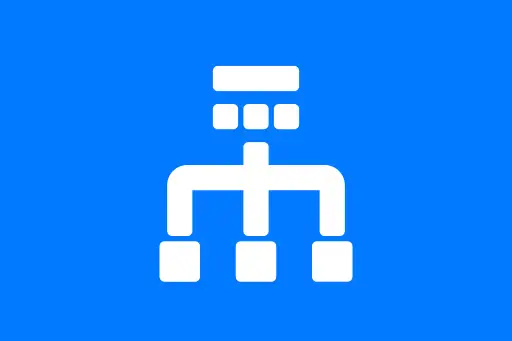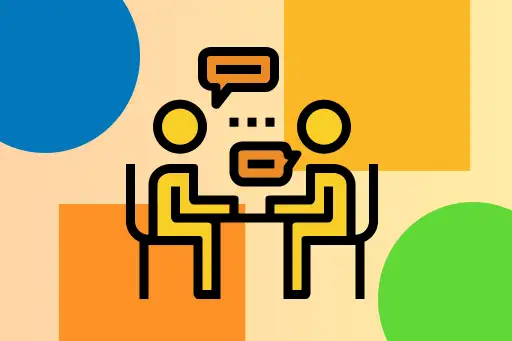Common Mistakes to Avoid in System Design Interviews
Introduction
System design interviews can be intimidating for beginners, not because of the coding, but because they require structured thinking, communication, and design intuition. Many candidates make avoidable mistakes that cost them the job offer. In this guide, we’ll walk you through the most common mistakes beginners make during system design interviews, with intuitive examples and thought-provoking questions to build your understanding.
1. Jumping Straight to the Solution
One of the most common beginner mistakes is immediately jumping into designing the system without clarifying the requirements. In system design, assumptions can break the whole design.
Example
Let’s say the interviewer asks: "Design a URL Shortener like bit.ly". A beginner might start with: "I’ll use a hash function to shorten the URL, store it in a database, and return the short version."
What’s wrong with this? There’s no discussion of scale, features, latency, or even usage frequency.
Better Approach
- Ask questions like: How many URLs per second? Any expiration? Do we need analytics?
- Clarify functional and non-functional requirements first.
Question:
What’s the risk of jumping into the design without clarifying requirements?
Answer:
You might design a system that is over-engineered or misses key functionalities that are critical to the interviewer’s expectations. It shows poor communication and design discipline.
2. Ignoring Trade-offs
Every design decision has trade-offs. Beginners often pick technologies or architectures without justifying their choice or exploring alternatives.
Example
Using a relational database (like MySQL) for a system that requires high write throughput (like logging millions of events per second).
What could go wrong? You might run into write bottlenecks or scaling issues.
Better Approach
- Discuss both SQL and NoSQL options.
- Explain why you're choosing one over the other (e.g., ACID guarantees vs scalability).
Question:
Is choosing the most popular technology always the best choice?
Answer:
No. Each technology serves a different purpose. Picking the right tool for the specific problem is what system design is about.
3. Not Considering Scale
Designs that don’t scale are often rejected. Beginners tend to design for a single user or small usage, while the interviewer expects a solution for millions of users.
Example
You’re asked to design an image-sharing platform. You say you’ll store images on a server and use a local database to track metadata.
This might work for 10 users, but what about 100 million?
Better Approach
- Think about CDN for image delivery.
- Use distributed storage like Amazon S3.
- Use a load balancer to distribute traffic.
Question:
What should you consider when estimating scale?
Answer:
Estimate daily users, read/write operations per second, data size, and availability requirements. Always ask the interviewer for scale expectations.
4. Overcomplicating the Design
Some candidates go overboard trying to sound smart, using microservices, message queues, and sharding in every design. This backfires when they can’t justify or explain the complexity.
Example
For a simple chat application, a candidate proposes:
- Using Kafka for message queuing
- Splitting each module into microservices
- Using Redis, Cassandra, and PostgreSQL together
When asked why, they can’t give clear reasons.
Better Approach
- Start simple. Then scale up based on requirements.
- Only add components when you can justify their need.
Question:
How can you decide whether to use microservices or a monolith?
Answer:
If your system is simple and has a small team, a monolith is better. If your system is large, requires independent scaling and deployment, microservices might make sense.
5. Forgetting about Bottlenecks
Even well-thought-out systems can fail under load if you don't identify and handle bottlenecks.
Example
In a file upload system, if all users hit a single backend server to upload files, that server could crash or slow down due to high I/O.
Better Approach
- Identify potential bottlenecks: disk, CPU, memory, database, etc.
- Add redundancy, replication, or queues to handle spikes.
Question:
What are some common bottlenecks in a web-based application?
Answer:
Common bottlenecks include the database, web server, cache storage, network bandwidth, and I/O operations. Always ask: what could break under load?
6. Not Prioritizing Availability and Fault Tolerance
Beginners often ignore system failures. Real-world systems must handle server crashes, network issues, and more.
Example
Imagine a user uploads a video. Midway, the server crashes. If the system doesn’t retry or persist partially uploaded files, the user loses everything.
Better Approach
- Design for retries, replication, and failover.
- Use load balancers and health checks.
Question:
How can you make a web application more fault-tolerant?
Answer:
Use redundant servers, database replication, retries for failed requests, circuit breakers, and distributed file storage.
7. Poor Communication During the Interview
System design interviews are collaborative. Staying silent or hiding your thought process makes it hard for the interviewer to evaluate you.
Better Approach
- Think aloud.
- Draw diagrams or walk through the architecture clearly.
- Ask clarifying questions and involve the interviewer in design decisions.
Question:
What if you're not sure about something during the interview?
Answer:
Say that you're not sure, and then offer your best guess with reasoning. Interviewers appreciate honesty and your thought process more than a perfect answer.
Conclusion
Acing a system design interview doesn’t mean building the most complex system. It means showing structured thinking, clear communication, awareness of trade-offs, and handling real-world concerns like scale, availability, and failure. By avoiding these common mistakes and building your intuition through practice and feedback, you can dramatically improve your performance—even as a beginner.
Introduction
System design interviews can be intimidating for beginners, not because of the coding, but because they require structured thinking, communication, and design intuition. Many candidates make avoidable mistakes that cost them the job offer. In this guide, we’ll walk you through the most common mistakes beginners make during system design interviews, with intuitive examples and thought-provoking questions to build your understanding.
1. Jumping Straight to the Solution
One of the most common beginner mistakes is immediately jumping into designing the system without clarifying the requirements. In system design, assumptions can break the whole design.
Example
Let’s say the interviewer asks: "Design a URL Shortener like bit.ly". A beginner might start with: "I’ll use a hash function to shorten the URL, store it in a database, and return the short version."
What’s wrong with this? There’s no discussion of scale, features, latency, or even usage frequency.
Better Approach
- Ask questions like: How many URLs per second? Any expiration? Do we need analytics?
- Clarify functional and non-functional requirements first.
Question:
What’s the risk of jumping into the design without clarifying requirements?
Answer:
You might design a system that is over-engineered or misses key functionalities that are critical to the interviewer’s expectations. It shows poor communication and design discipline.
2. Ignoring Trade-offs
Every design decision has trade-offs. Beginners often pick technologies or architectures without justifying their choice or exploring alternatives.
Example
Using a relational database (like MySQL) for a system that requires high write throughput (like logging millions of events per second).
What could go wrong? You might run into write bottlenecks or scaling issues.
Better Approach
- Discuss both SQL and NoSQL options.
- Explain why you're choosing one over the other (e.g., ACID guarantees vs scalability).
Question:
Is choosing the most popular technology always the best choice?
Answer:
No. Each technology serves a different purpose. Picking the right tool for the specific problem is what system design is about.
3. Not Considering Scale
Designs that don’t scale are often rejected. Beginners tend to design for a single user or small usage, while the interviewer expects a solution for millions of users.
Example
You’re asked to design an image-sharing platform. You say you’ll store images on a server and use a local database to track metadata.
This might work for 10 users, but what about 100 million?
Better Approach
- Think about CDN for image delivery.
- Use distributed storage like Amazon S3.
- Use a load balancer to distribute traffic.
Question:
What should you consider when estimating scale?
Answer:
Estimate daily users, read/write operations per second, data size, and availability requirements. Always ask the interviewer for scale expectations.
4. Overcomplicating the Design
Some candidates go overboard trying to sound smart, using microservices, message queues, and sharding in every design. This backfires when they can’t justify or explain the complexity.
Example
For a simple chat application, a candidate proposes:
- Using Kafka for message queuing
- Splitting each module into microservices
- Using Redis, Cassandra, and PostgreSQL together
When asked why, they can’t give clear reasons.
Better Approach
- Start simple. Then scale up based on requirements.
- Only add components when you can justify their need.
Question:
How can you decide whether to use microservices or a monolith?
Answer:
If your system is simple and has a small team, a monolith is better. If your system is large, requires independent scaling and deployment, microservices might make sense.
5. Forgetting about Bottlenecks
Even well-thought-out systems can fail under load if you don't identify and handle bottlenecks.
Example
In a file upload system, if all users hit a single backend server to upload files, that server could crash or slow down due to high I/O.
Better Approach
- Identify potential bottlenecks: disk, CPU, memory, database, etc.
- Add redundancy, replication, or queues to handle spikes.
Question:
What are some common bottlenecks in a web-based application?
Answer:
Common bottlenecks include the database, web server, cache storage, network bandwidth, and I/O operations. Always ask: what could break under load?
6. Not Prioritizing Availability and Fault Tolerance
Beginners often ignore system failures. Real-world systems must handle server crashes, network issues, and more.
Example
Imagine a user uploads a video. Midway, the server crashes. If the system doesn’t retry or persist partially uploaded files, the user loses everything.
Better Approach
- Design for retries, replication, and failover.
- Use load balancers and health checks.
Question:
How can you make a web application more fault-tolerant?
Answer:
Use redundant servers, database replication, retries for failed requests, circuit breakers, and distributed file storage.
7. Poor Communication During the Interview
System design interviews are collaborative. Staying silent or hiding your thought process makes it hard for the interviewer to evaluate you.
Better Approach
- Think aloud.
- Draw diagrams or walk through the architecture clearly.
- Ask clarifying questions and involve the interviewer in design decisions.
Question:
What if you're not sure about something during the interview?
Answer:
Say that you're not sure, and then offer your best guess with reasoning. Interviewers appreciate honesty and your thought process more than a perfect answer.
Conclusion
Acing a system design interview doesn’t mean building the most complex system. It means showing structured thinking, clear communication, awareness of trade-offs, and handling real-world concerns like scale, availability, and failure. By avoiding these common mistakes and building your intuition through practice and feedback, you can dramatically improve your performance—even as a beginner.











Comments
Loading comments...